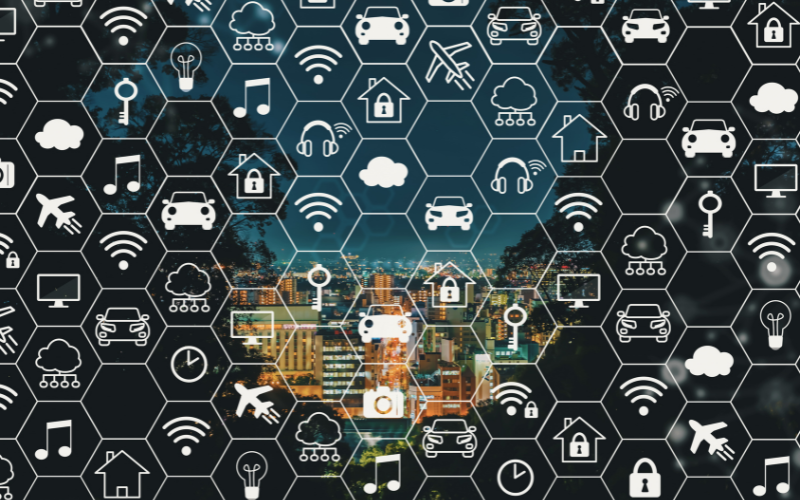Deciphering the Edge: The Convergence of IoT and Edge Computing

The IoT revolution is creating an interconnected world, turning everyday objects into intelligent devices. And the breadth of industries set to benefit from IoT is staggering. In manufacturing, IoT enables real-time monitoring of production lines, improving efficiency and reducing waste. Likewise, the healthcare industry is achieving better care and more accessibility through remote patient monitoring and telemedicine. And agriculture is leveraging IoT for precision farming, allowing for effective resource management and increased crop yield.
However, the growing number of interconnected devices generates a deluge of data that needs to be processed and analyzed efficiently. This is where edge computing comes into play. As these two powerful technologies come together, they open up new opportunities and possibilities for businesses and individuals alike. They promise a more connected, automated, and intelligent future, breaking the boundaries of what we thought was possible. So let’s get into how.
IoT and Edge Computing Explained
The Internet of Things (IoT) refers to the network of physical devices, vehicles, home appliances, and other items embedded with sensors, software, and connectivity, enabling these objects to connect and exchange data.
Edge computing, on the other hand, is a computing paradigm that brings computation and data storage closer to the location where it’s needed, reducing latency and bandwidth use. It’s all about processing data locally to provide quicker, more efficient responses.
While IoT deals with connecting devices and data collection, edge computing focuses on how and where that data is processed. The two concepts, while distinct, are increasingly intertwined as IoT edge computing – a system where data from IoT devices is processed closer to where it is created instead of sending it across long routes to data centers or clouds. This symbiosis improves speed, reduces latency, and enhances data security.
How Can They Work Together? The Benefits of IoT Edge Computing
When coupled, IoT and edge computing form a robust and responsive ecosystem capable of transforming data handling and processing. More specifically, IoT edge computing offers:
- Reduced Latency: With data processing taking place closer to the source, communication latency between IoT devices and central IT networks is significantly reduced.
- Faster Response Times: The reduced latency allows for quicker decision-making and responses, enhancing operational efficiency.
- Improved Network Bandwidth: By minimizing the data sent back to centralized data centers, IoT edge computing optimizes network bandwidth use and reduces potential bottlenecks.
- Operational Continuity: Edge computing ensures IoT devices can continue functioning even when network connections are lost, guaranteeing uninterrupted operation.
- Real-Time Data Processing and Decision Making: Local processing enables immediate data aggregation, facilitating faster decision-making with the help of analytics algorithms and machine learning. This leads to more timely insights and improved performance of IoT devices.
- Increased Data Security and Privacy: Processing data locally at the edge can help enhance security by reducing exposure to potential network vulnerabilities. Additionally, storing less sensitive data on the cloud enhances user privacy.
- Cost Savings: By reducing the need for continuous high-bandwidth data transmission to the cloud, IoT edge computing can lead to significant cost savings in data transportation and storage.
What is an IoT Edge Device?
An IoT edge device is a piece of hardware that connects the physical world with the digital world in the Internet of Things (IoT) system. It can be any device that collects data from its surroundings, such as a sensor measuring temperature, a smartwatch tracking health data, or a security camera monitoring surroundings.
What makes these devices ‘edge’ is their ability to process and analyze the data they collect right there on the spot, instead of sending all the data to a central server or cloud for processing.
For instance, an IoT edge device could be a sensor in a manufacturing plant monitoring equipment, a wearable device tracking health metrics, or a component in a self-driving car analyzing real-time traffic data. In all these cases, the edge device is responsible for collecting data and making sense of it right where it’s generated.
Practical Applications of IoT Edge Devices
The use cases for IoT edge computing are as varied as they are critical. One important use case is autonomous vehicles. Here, IoT edge devices process a massive amount of data from sensors in real-time, making instantaneous decisions that can have life-or-death implications. This includes analyzing traffic conditions, identifying pedestrians, and responding to unexpected events, all requiring low latency that only edge computing can provide.
The healthcare industry uses IoT edge devices in wearable technology and remote monitoring equipment. These devices collect, process, and analyze data in real-time, offering insights into a patient’s health and enabling rapid response to emergencies.
The manufacturing industry is another area where IoT edge computing shines. IoT edge devices on factory floors can monitor machine performance, predict maintenance needs, and even automate processes. This real-time data processing can significantly increase efficiency and productivity, reducing downtime and waste.
Securing the Future: Enhancing IoT Security at the Edge
As IoT and edge computing evolve, security remains a paramount concern. With the exponential growth of IoT devices, the attack surface for potential cyber threats has expanded significantly. Therefore, securing IoT at the edge becomes critical to maintaining interconnected systems’ integrity and protecting sensitive data.
IoT security involves implementing protective measures at every stage of the IoT ecosystem, from the devices themselves to the network and the data they handle. Due to their diversity and the massive scale of deployment, IoT devices can often become weak points vulnerable to cyberattacks.
An IoT gateway serves as a critical component in enhancing the security of IoT at the edge. These gateways act as intermediaries between IoT devices and the cloud or data center.
They can provide a robust security layer by offering functions like encryption, identity management, and secure data transmission, protecting sensitive data from potential breaches.
Other crucial considerations in securing IoT at the edge involve:
- Regular security updates and patches.
- Ensuring the use of strong, unique passwords.
- Employing secure protocols for device-to-device communication.
- Incorporating a strong, layered defense strategy that considers potential threats at every level.
Final Thoughts
The convergence of IoT and edge computing is not merely a technological trend; it’s a strategic transformation set to redefine the digital landscape. But as we move towards a more connected world with IoT and edge computing, it is crucial to prioritize security. With proper strategies and tools in place, we can reap the benefits of these technologies while minimizing the risks.
Try Portnox Cloud for Free Today
Gain access to all of Portnox's powerful zero trust access control free capabilities for 30 days!



